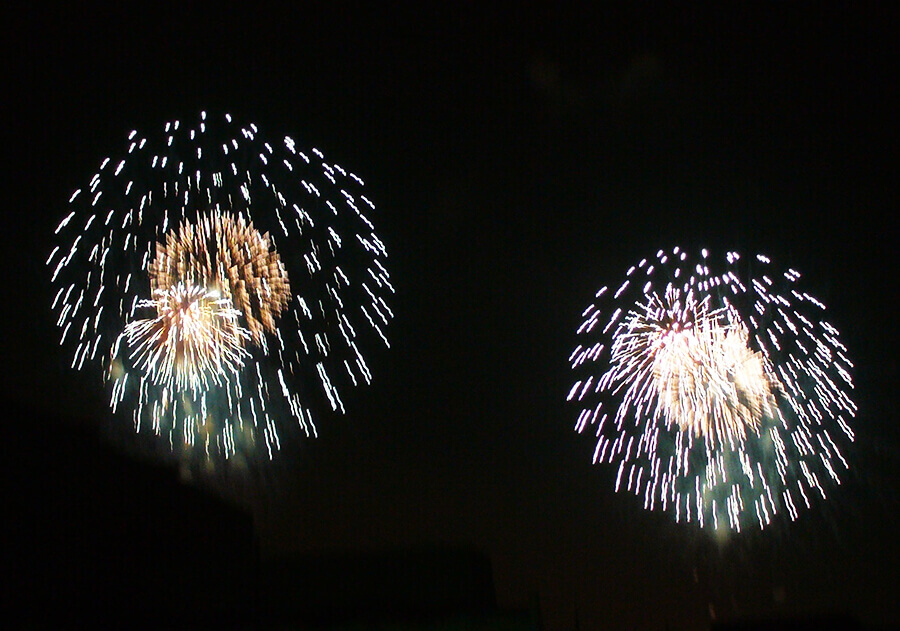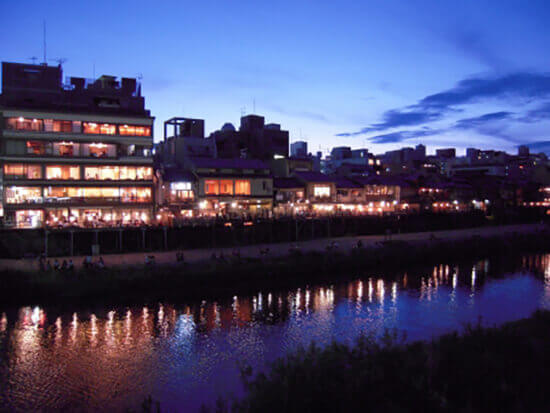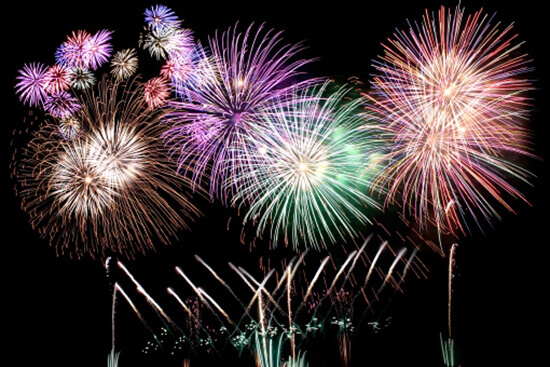
Fireworks are one of the most popular summer traditions in Japan. During this season, fireworks displays are held all over Japan. Watching the fireworks display by the water's edge will make you feel refreshed and the heat will blow away.

skyrocket (firework)
from long agoFire has the power to ward off evil and comfort the spirits.It is said,It was customary to set off fireworks when disasters or epidemics occurred.In some regions, it is said that an epidemic broke out the year fireworks were discontinued. In some regions, the custom of placing fireworks in front of the eaves of houses to ward off evil spirits is said to be still practiced today.
Although it is not possible to see fireworks (competitions) in Kyoto City now, fireworks used to be launched in the city.
It is said that on September 8, 1765, the Kyoto Magistrate's Office issued a warning that "big fireworks were being displayed on the Kamo River, but because the area north of Sanjo is close to the Imperial Palace, large fireworks must not be displayed for fire prevention purposes.
In the Edo period, fireworks could be seen on the Kamo River.In fact, fireworks displays were still held in the Showa period.

Kamo River at dusk in summer
It was August 16, 1954. A newspaper company sponsored a fireworks display on the Kamogawa River. The riverbanks of the Kamo River were crowded with many spectators. The river was decorated with more than 300 fireworks, and on the other side, the "Gozan-no-Okuribi" (Bonfire of the Five Mountains) was ignited. That night,Kamogawa River spectators enjoy two traditions: fireworks and bonfiresIt was a luxurious late-summer evening. It was a luxurious late-summer evening.
That night, however, something terrible happened at the Kyoto Imperial Palace. A fire broke out in the small palace to the northeast of Shikinden Hall, and the entire building burned to the ground. At the time, it was reported that the cause of the fire might have been parachute fireworks set off that night. However, the newspaper company that hosted the fireworks event denied that fireworks were the cause of the fire, and the truth remained unknown.
By the way, I was not familiar with the paratrooper-type fireworks launched at the Kamogawa Fireworks Festival, so I was curious to know what they were. I checked the reference database of the National Diet Library, and found that "poka-mono" is a fireworks display in which lightning, stars, bags, and paratroopers come out from the inside. Pokamono" refers to fireworks that break in two like a kusudama and release various objects from inside. I wonder if these were the types of fireworks that decorated the Kamogawa River in those days.
from the startFireworks have their roots in the wolfsbaneIt is said that the first fireworks were introduced to Japan in the Edo period (1603-1867). It was only after the introduction of guns and gunpowder technology that fireworks were introduced to Japan, and it was not until the Edo period (1603-1868) that fireworks for viewing became popular. In the Edo period (1603-1867), fireworks caused so many fires that the shogunate even issued a ban on fireworks. Fire can be used to ward off evil spirits, but it can also cause fires.
In Kyoto, besides the Kamo River,There was a time when you could watch fireworks at Katsura River.However, the reason for the cancellation was probably for fire prevention. Some Kyoto citizens opposed the fireworks display, saying, "It is outrageous to hold a fireworks display on the day of the Gozan Okuribi. It is outrageous to hold a fireworks display on the day of the Gozan Okuribi, and it is not for tourists.
We asked an elderly person living in Kyoto about the fireworks display at that time. He said, "We were told that it was not good to set off fireworks on the day of the bonfire. So we didn't go to see the fireworks. It seems that on the night of the 16th in Kyoto, it would be better to quietly watch the Gozan-no-Okuribi, the bonfires that send off the spirits of the dead.

Fireworks
Tradition that exists everywhere in the city of Kyoto. It is not just a picture, it is secretly alive in this modern age and continues to coexist with people. The two of Office TO, who previously wrote a series of articles "Kyoto's Demon World Exploration" in the monthly magazine Leaf, explore the mysterious "different" world of Kyoto, which was created over 1200 years. I will unravel the story while actually visiting the place. .
 News
News Feature article
Feature article Featured event
Featured event